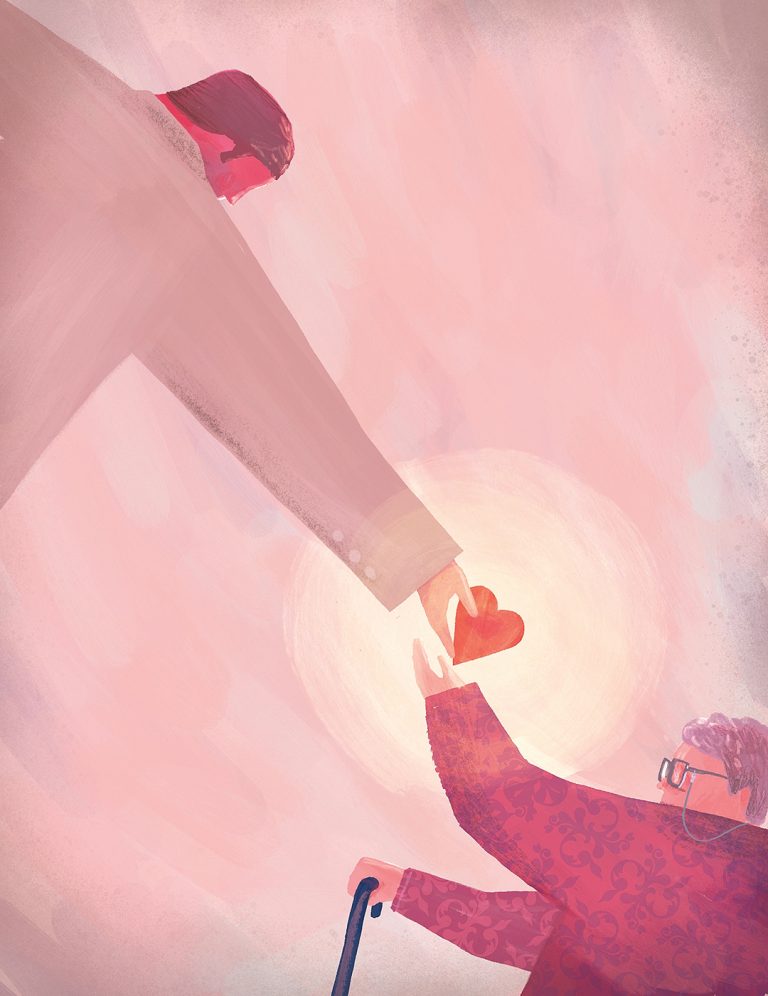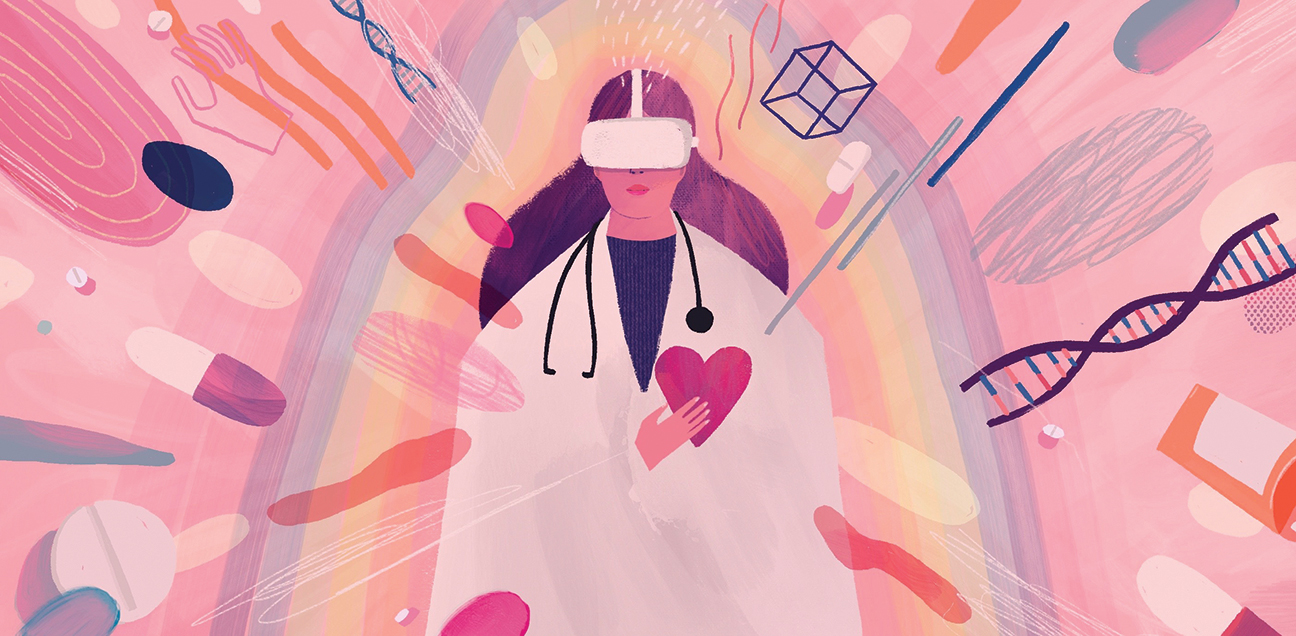
When health care providers make assumptions, those invisible judgments can affect the quality of care patients receive. Bias affects patients everywhere, including in Appalachian Ohio, which has high rates of diseases such as diabetes, obesity, and opioid addiction. Patients with these conditions are often stigmatized as unwilling to take responsibility for their health.
An ambitious Ohio University project aims to spread empathy and counteract bias by immersing health care providers in a scripted virtual reality (VR) experience. The program emphasizes how social determinants, or factors beyond a patient’s control such as income, access to healthy food, and job stability, can affect their health.
More than 200 OHIO faculty, staff, and students from seven colleges worked to produce the experience, with $1.9 million in grants from the Ohio Medicaid Technical Assistance and Policy Program. The project was led by Deborah Henderson, BSN ’84, PHD ’97, John McCarthy of the College of Health Sciences and Professions (CHSP), and Elizabeth Beverley of the Heritage College of Osteopathic Medicine (HCOM).
We all bring our own biases that we have from our life experiences,” says Henderson. “We need to identify those and examine them and make sure they do not creep into the care that we provide.
The VR experience consists of two video series that tell the stories of fictional patients played by OHIO-trained actors, are inspired by real-world cases, and were developed with input from OHIO medical experts.

Illustrations by Nicolas Ogonosky
Destiny is 23 years old, pregnant, and addicted to opioids. She loses her job as a motel maid and discovers her boyfriend has sold her Subutex (a treatment for opioid addiction) to buy groceries. Lula Mae Tate is a 72-year-old woman with type 2 diabetes who cares for her grandchildren and disabled adult son, and volunteers at the local food pantry.
VR Producer Carrie Love, MFA ’19, from OHIO’s GRID lab, led a team that created 12 videos for each character that show them interacting with health care providers as they go about their daily lives. Actors playing health care providers exhibit bias against Destiny and Lula Mae, which prevents them from getting the help they need.
Love says the strength of the large inter-disciplinary project team made it possible to use the complex tech required to make VR content. “The real magic is that we’ve got so many players and they’re all the best in the fields,” Love says.
Both VR training programs are designed to be viewed wearing Oculus Go headsets as part of interactive workshops, one for each series. Between videos, participants discuss what they saw with each other and a facilitator.
GRID Lab Cinematographer Matthew Love, MFA ’18, developed new techniques to create special VR effects that emphasize aspects of the story. At one point, viewers can spin around to witness Lula Mae’s daily obstacles at home, such as challenges that keep her from refilling a prescription.
“We saw an opportunity to combine the strengths of 360-degree video with the storytelling techniques that have been so honed and evolved in filmmaking,” says Matthew Love.
Toward the end of each series, participants interact directly with a character and read from text overlaid on the scene in their headsets. This allows participants to rehearse appropriate, useful phrases for confronting bias in the workplace and guides them in providing the best care for patients. “It’s really your turn to do it,” says McCarthy.
An evaluation of the efficacy of their VR experience is underway via focus groups and a participant survey. In June, the work will be transferred to the Ohio Colleges of Medicine Government Resource Center, which will decide whether to make the program available to health care providers statewide.
Berkeley Franz, a medical sociologist at HCOM who was not involved with the project, often teaches medical students to recognize and address their biases. She says the VR experience includes three important elements—an opportunity to talk about bias and normalize it, a chance to hear about patients’ experiences, and an invitation to think about each character as an individual. “I think it’s a really powerful technique,” she says. “I think this is a really positive use of technology.”





